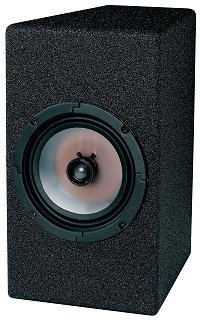New Speaker is the Voice of Yamaha Active Field Control
 Yamaha AFC Loudspeaker (S8AFC) |
Mounting hardware and finishes may, at the customer's request, be customized to fit specific design applications: The S8AFC enclosure exteriors may be painted and include preset holes to accommodate hardware, including a full range of items from Allen Products. The S8AFC-D drivers can be retrofitted into standard speaker cans.
"The rise of multi-purpose uses in performing arts, worship and public spaces has resulted in a growing demand for variable acoustic systems," states Marc Lopez, product manager for Yamaha Commercial Audio. "Active Field Control provides an unobtrusive design and relatively inexpensive means to improve a venue's sound. Given AFC's unique concept, the speakers are essentially the voice of the system."
Introduced in Japan in 1985, AFC shapes and corrects a room's acoustics to provide a more realistic sound environment. The system employs electro-acoustic technologies that enable "natural" enhancements in major auditory impressions such as reverberation, loudness and spaciousness. AFC has been installed in at least 60 venues in Japan, and the first permanent U.S. installation was made at Yamaha Artist Services in New York City in 2004.
AFC differs from other systems in that it picks up reflected sound and distributes it into the sound field indirectly, enhancing the field through a feedback loop rather than reproducing the sound directly through loudspeakers aimed at the audience. By using boundary mics placed at ceiling height (rather than suspended from the ceiling), AFC recaptures the diffused sound field and reproduces it back into the diffused sound field again.
"Active Field Control basically takes a less-than-ideal space and makes it sound more natural," adds Lopez. "The idea is to build up energy in the room using an actual fingerprint of the space. Since what we're really doing is taking energy from the room and feeding it back into the room through speakers, there is the physical possibility of creating an unpleasant feedback condition. However, two methods are used to prevent that: the first is an Electronic Microphone Rotator (EMR), which periodically changes the routing of microphones to speakers; the second is through the use of a fluctuating Finite Impulse Response (FIR) filter in the system's DSP."
Yamaha is offering its services from the design phase onward for all AFC projects in the U.S. "Because of the utilization of feedback, the tuning process for the system is extremely important," explains Hiro Ikeda, AFC Product Manager. "Once the installation is complete, we will go to the venue, and based on our conversations with the acousticians and their clients, we will take care of the tuning."
For more information on the Yamaha AFC speakers and the Active Field Control system, visit Yamaha at NSCA 2005, Orange County Convention Center, Demo Room N220G or Booth 0709; write Yamaha Corporation of America, Commercial Audio Systems Division, P.O. Box 6600, Buena Park, CA 90620; telephone (714) 522-9011; e-mail infostation@yamaha.com; visit www.yamahaproaudio.com or www.yamaha-afc.com.
 |
| © 2010 Yamaha Corporation of America. All rights reserved. |
